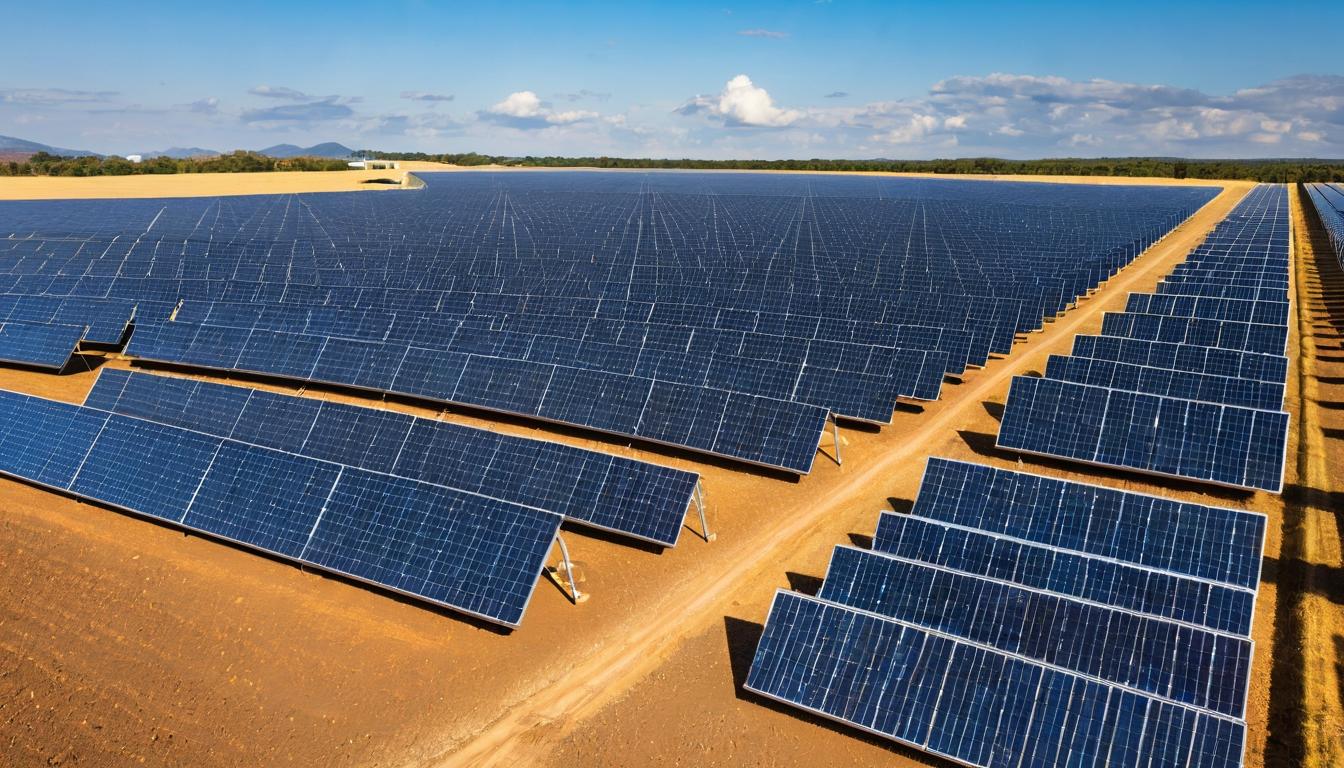Walking through the sprawling solar farms of California's Mojave Desert, you can't help but feel the quiet hum of transformation. These fields of glistening panels aren't just generating electricity—they're rewriting the rules of energy production. But what happens when we look beyond the familiar silicon rectangles? The real solar revolution is happening in laboratories, factories, and innovative business models that most consumers never see.
Recent breakthroughs in perovskite solar cells are turning the industry on its head. Imagine solar panels that can be printed like newspapers, applied as spray-on coatings, or integrated directly into building materials. Researchers at institutions like the National Renewable Energy Laboratory are achieving efficiencies that rival traditional silicon panels, with the added benefit of flexibility and transparency. This isn't science fiction—it's the next chapter in solar technology that could make every surface a potential power generator.
While homeowners debate between monocrystalline and polycrystalline panels, a quiet revolution in solar recycling is taking shape. With millions of panels installed over the past two decades, the industry is facing its first major wave of end-of-life equipment. Companies like First Solar and European recyclers are developing processes that recover up to 95% of panel materials. The challenge? Creating an economically viable system that can handle the coming tsunami of retired panels without creating new environmental problems.
Community solar projects are democratizing access to clean energy in ways that individual rooftop systems never could. From shared solar gardens in Minnesota to virtual net metering programs in Massachusetts, these initiatives allow renters, low-income households, and those with shaded roofs to participate in the solar economy. The model represents a fundamental shift from individual ownership to collective benefit, breaking down barriers that have long excluded significant portions of the population from solar access.
Solar-plus-storage systems are transforming how we think about energy reliability. The combination isn't just about backup power—it's about creating microgrids that can operate independently during outages, smooth out intermittent generation, and even sell excess power back to the grid during peak demand. Companies like Tesla, LG, and SunPower are integrating battery storage so seamlessly that soon, the question won't be whether to add storage, but how much storage makes sense for your specific needs.
The agricultural world is discovering that solar panels and crops can coexist in surprising harmony. Agrivoltaics—the practice of combining agriculture with solar power generation—is showing promise in reducing water evaporation, protecting crops from extreme weather, and providing farmers with additional revenue streams. From berry farms in Massachusetts to vineyards in Italy, these dual-use systems are proving that we don't always have to choose between food production and clean energy.
Solar manufacturing is undergoing its own transformation, with new production methods reducing costs and environmental impact. Thin-film technologies, advanced manufacturing techniques, and supply chain innovations are driving down prices while improving performance. The recent passage of the Inflation Reduction Act in the United States has sparked a manufacturing renaissance, with companies announcing billions in new factory investments that could reshape global supply chains.
Floating solar installations are solving land-use challenges while offering unexpected benefits. These aquatic arrays, deployed on reservoirs, lakes, and even the ocean, not only generate electricity but also reduce water evaporation and algae growth. Countries like Japan and Singapore are leading the way, with projects that demonstrate how creative siting can overcome one of solar's biggest limitations: the need for large, flat, unshaded areas.
The digital revolution is coming to solar through AI-powered monitoring, predictive maintenance, and smart inverters that can communicate with the grid. These technologies are making solar systems more efficient, reliable, and valuable. Imagine panels that can predict when they need cleaning, systems that automatically optimize performance based on weather forecasts, and inverters that help stabilize the grid during fluctuations.
As solar continues its exponential growth, the industry faces complex challenges around grid integration, workforce development, and equitable access. The solutions will require not just technological innovation but policy creativity, community engagement, and business model evolution. What's clear is that the solar story is far from over—in many ways, it's just beginning to reveal its full potential to transform how we power our world.
The solar revolution: beyond panels and into the future of energy

